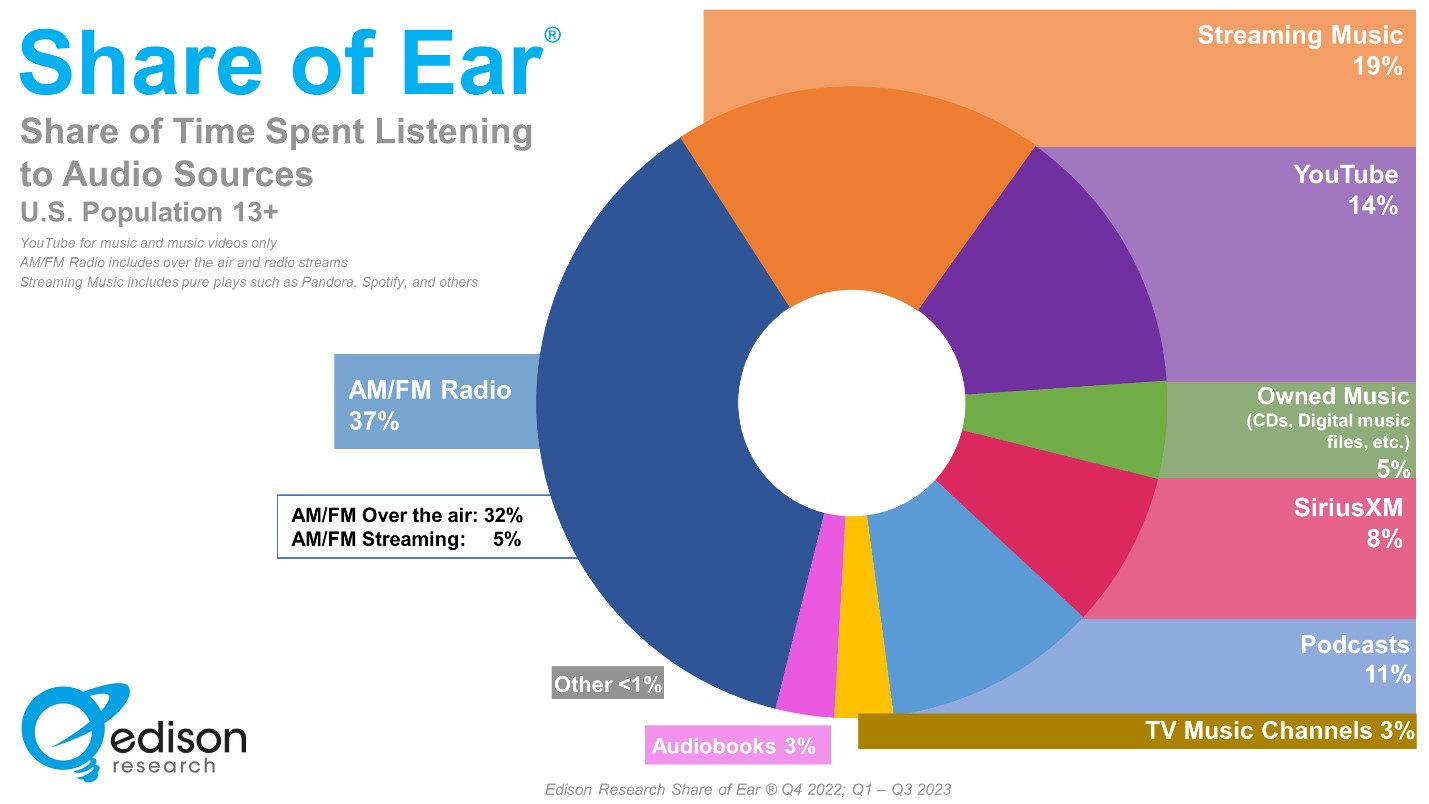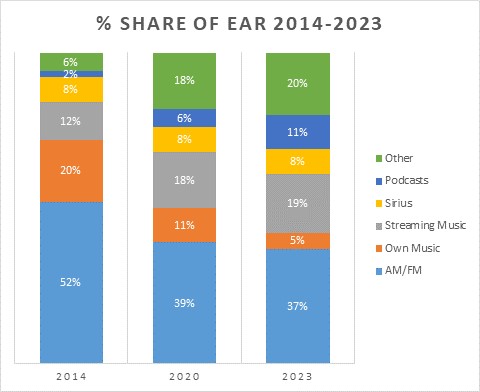I never cease to be amazed by the insightful questions I get from nonprofit communications and marketing people. Last week, I published an article about whether people still watch television and readers responded with the question, “Great, but do people still listen to radio?”
I was curious too. Clearly, the way people listen to radio has changed. Streaming platforms, podcasting, and other technologies have certainly had an impact.
Is radio still relevant for modern audiences, and how does all of this impact public service announcements? Let us answer those questions together.
Radio Advertising Metrics: Reach
Reach is the most commonly used radio advertising metric. It measures audience size and the number of people likely to hear a radio advertisement. Reach is based on the percentage of the population that listens to a particular station, or radio in general, for at least 15 minutes in a given week.
Using this metric, AM/FM stations are able to say that in 2023 AM/FM radio reached 91% of Americans, or approximately 272 million people. However, does looking at a 15-minute snapshot of people’s listening behavior really help us to understand listener behavior? It definitely does not help to identify how much of their time they spend listening to radio and how it has changed over time.
To do that, a different metric was needed, one similar to what Nielsen uses to measure time spent watching television.
Share of Ear: Radio’s New Listening Statistics
Enter Edison Research, a market research company that specializes in radio. In 2014, Edison developed a new metric called Share of Ear to do exactly what we need. Share of Ear measures the percentage of the public’s time spent listening to all audio content. Most importantly, because Share of Ear correlates directly with audience size, it is the perfect way to understand how radio fits into today’s audio listening behavior.
The shift in listener behavior started well over a decade ago with a growth in streaming music and podcasting. In 2023, Edison found that AM/FM’s Share of Ear decreased to 37% of listening time. As the chart below shows, the decrease in AM/FM Share of Ear listening mirrored the rise in internet-based, on-demand audio listening.

Changes in Radio Listening Statistics Over Time
When we look more closely at various parts of the pie, we get a better picture of how radio listening changed between 2014 and 2023.
- Broadcast AM/FM radio still accounts for the largest portion of time spent listening to audio content, although it lost 15 percentage points between 2014 and 2023, going from 52% to 37%.
- With fewer people owning audio media, listening to CDs, mixed tapes, and personal files decreased from a 20% share in 2014, to only 5% in 2023.
- Streaming Music, which includes services like Spotify, Pandora, and Apple Music has become more popular, growing from a 12% share to 19%.
- SiriusXM has claimed a small, but loyal proportion of the market, holding steady at 8%.
- Podcast listening grew strongly from just 2% in 2014 to 11% in 2023.
- Other, which includes audio books, YouTube Music, and TV music channels, grew from 6% to 20%, driven primarily by a large increase in people listening to YouTube Music.

AM/FM Radio Listeners
In 2023, 50% of AM/FM radio listening happened in cars. Clock radios and portable radios are hard to find in modern American homes. That is why the broadcasting industry was so concerned when some car manufactures announced they were planning to stop including AM radios as standard equipment in vehicles.
To combat this, the National Association of Broadcasters lobbied Congress to require that AM radios be declared a safety device that must be built into all new cars. This legislation is working its way through the Senate now.
Audio Podcast Listener Numbers
Podcasting has become an important way to deliver content to targeted audiences. In fact, podcast audiences deliver the highest number of attentive seconds per thousand impressions, resulting in better brand recall and brand choice uplift.
To help nonprofit organizations reach these audiences at affordable prices, Connect360 recently launched its new audio podcast service this past fall.

Do People Still Listen to Radio?
Even if we define radio as just AM/FM broadcasting, the answer to “Do people still listen to radio?” is yes. People are still listening to radio, only not quite as much as in the past. Broadcast radio is a mature business that is capturing a significant 37% share of people’s listening time. It remains an important advertising medium and reliable way to reach large audiences.
As a mature business, radio companies are concentrating their efforts on what they believe are the strongest areas of listener interest: news, sports, politically opinionated content, and foreign language broadcasting — especially Spanish.
If we include streaming, podcasting and other online platforms in our definition of radio, the answer is an even more emphatic, “yes.”
Do People Still Listen to Radio Public Service Announcements?
As the owner of a company that specializes in distributing public service announcements to television and radio stations, I tend to look at the changes in media based on how they affect PSAs. In 2023, Connect360-distributed radio PSAs received an amazing 624,000 airings. This was down 5% from five years ago in 2018 and down 2% from 2022, however, is still a remarkable testament to the strength of radio PSAs.
Returning to the question I started with – yes, people are still listening to radio. Radio continues to be a stable source of free, donated advertising for nonprofit organizations who want to take advantage of radio’s long history of running PSA campaigns.
© 2024 Connect360 Multimedia
About The Author

Steven Edelman
Steve Edelman is a Partner and President of Connect360. He is a leading expert on the measurement, valuation, and financial reporting of Public Service Announcements by not-for-profit organizations.
About Connect 360
Connect360 is a leading media placement agency driving measurable results for some of Charity Navigator’s highest-ranked nonprofits, well-known associations, government agencies and public relations/marketing firms.



